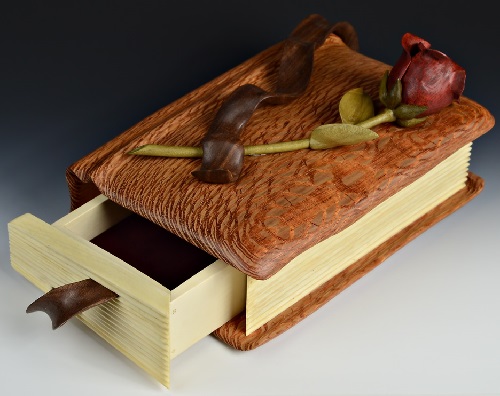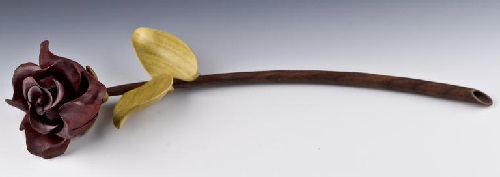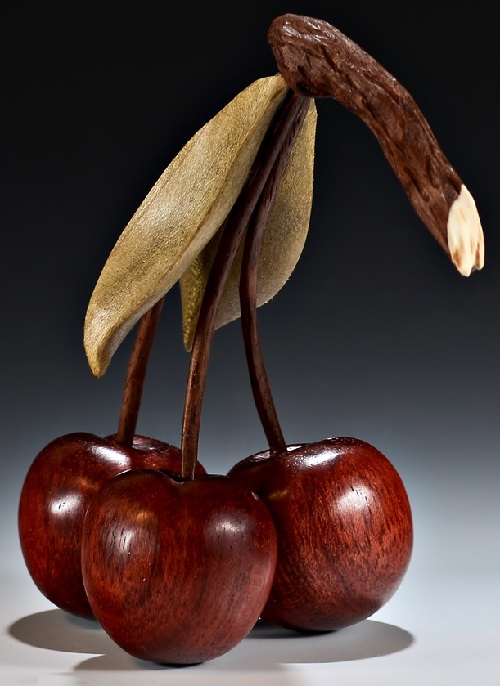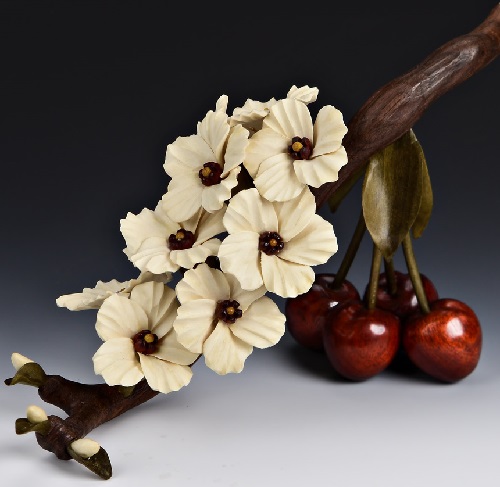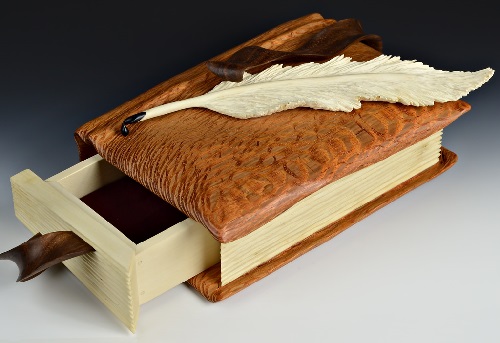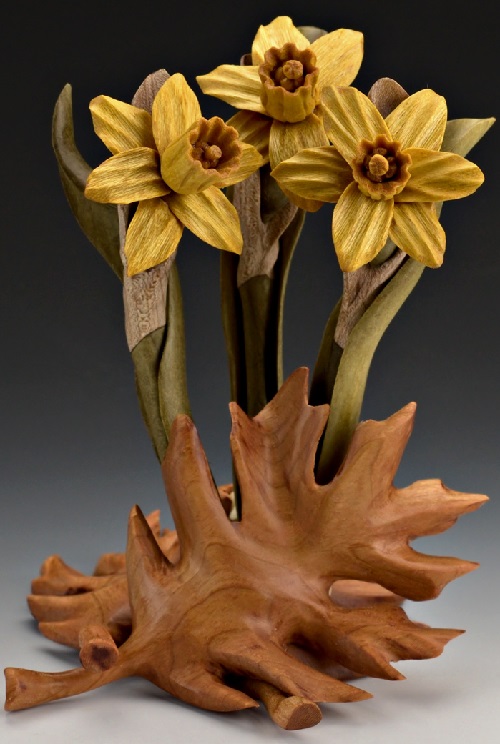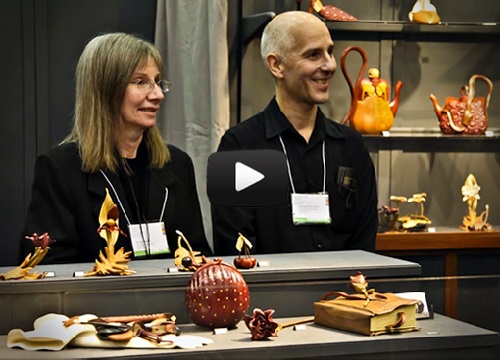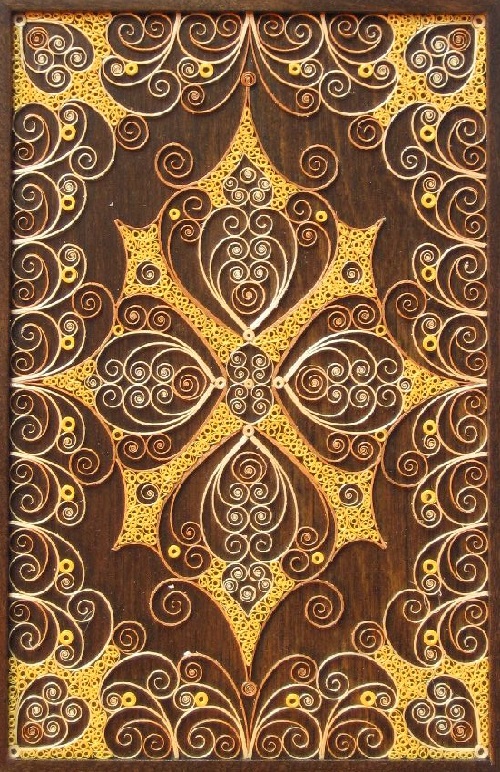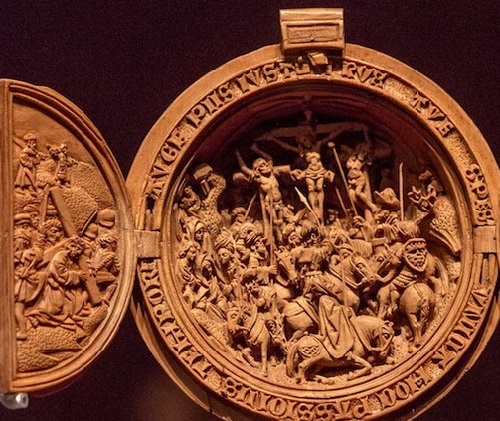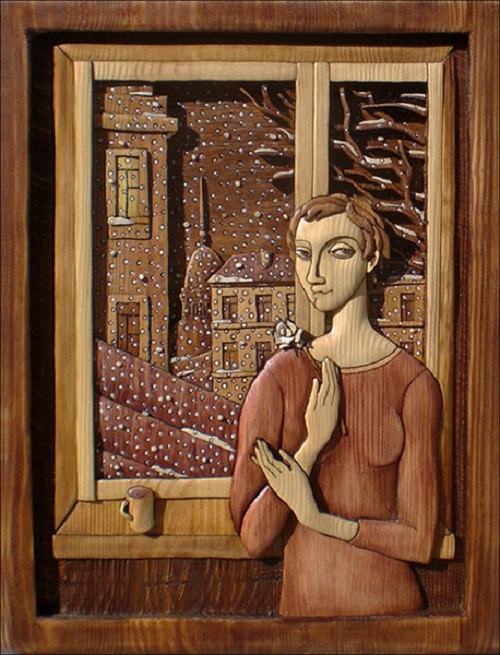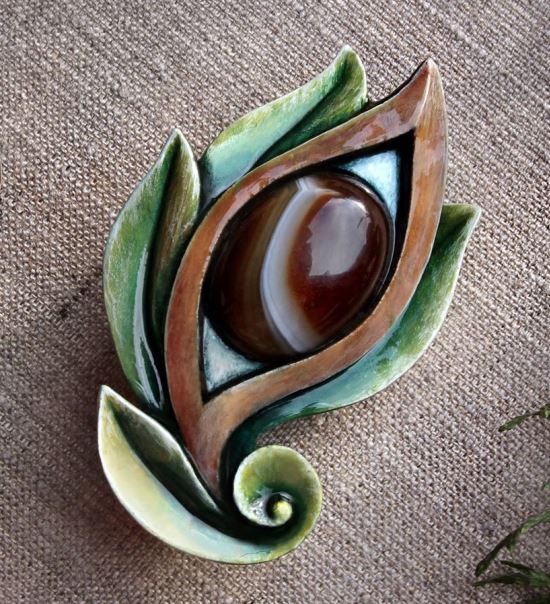Denise Nielsen and George Worthington wood art
Denise Nielsen and George Worthington wood art
Traditionally, wood is the most accessible and easily processed material and essential for the manufacture of many products and parts. It provides great opportunities for the realization of the artistic intent of the author. Because of the relatively light and good workability, as well as many other positive properties of wood can be created a variety of shapes, color, texture and details. It is also important that the wood art can be easily organized in the home. The amazing things of a trompe l’ oeil quality create a married couple – American wood artists Denise Nielsen and George Worthington. Denise as a professional artist, she invents the future images. She is also a teacher of fine arts. And her husband, George – just self-taught. He watched the work of his wife over the years and from her he received enormous practical education.
Denise and George received one of the five “Awards of Excellence”, at the 2012 American Craft Council, Baltimore Show. The talented duo of wood carvers have chosen wood for its natural flexibility, infinite shades and natural colors, as in the creation of their sculptures they do not use paints, using only oil paint and varnish as a final touch. In the process of creation George cuts the primary image, the outline of the future masterpiece, and the wife hones to perfection, decorates and completes the picture.
When processing wood, its most important properties to be considered. To perform the artwork is used dried wood. Humidity of green wood is 50-80%, air-dry (3-6 months of drying under a canopy) – 15-20% and room-dry (3-6 months of drying in the room) – 8-12%. Humidity of wood should not be more than 20%. When uneven shrinkage cracking occurs and its distortion.
The hardness of the wood depends on the species, moisture, and the cutting direction. The highest hardness – with face cutting, the lowest – at the radial (except birch). High hardness have such breeds as oak, beech, hornbeam, maple, walnut, pear, ash, birch and others. The soft species are pine, spruce, fir, poplar, linden, aspen, alder.
The color of the wood depends on the climatic conditions of growth. Species of the temperate zone (pine, spruce, birch, aspen) painted relatively pale in comparison to species from warmer areas (oak, walnut, acacia and others.)
The color intensity increases with the age of the tree. Color change occurs as a result of destruction of wood by fungi as well as during storage.
Gloss of wood depends on the reflective characteristics of its surface. Clean cut along the fibers reflect light better than with the cut fibers, which give more diffuse reflection. The degree of gloss depends on the type of wood, the presence of medullary rays. Oak, beech, birch, poplar, linden, pear have a semigloss sheen; maple – silky; Birch – moire.
Shine, like the color, depends on the nature of light. With the change in the direction of the light or the location of the viewer matte surface may become shiny, bright – dark. This property of wood is important when creating a plot compositions, kits, type of flooring, and especially portraits.
Denise Nielsen and George Worthington wood art
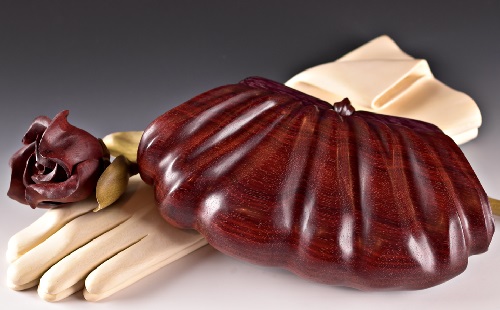
Bloodwood Purse. Purpleheart Handle. Bloodwood Catch. Holly Gloves. Bloodwood Rose. Poplar Stem and Leaves. Denise Nielsen and George Worthington Wood art
Wood texture is formed by the cutting of anatomical elements. The more complex the structure of the wood, the richer texture. Softwood have a simple structure and is mostly monotonous texture, due to the different colored layers of early and late. A deciduous wood structure is more complex with richer texture. In many ways, it depends on the direction of the cut (radial, tangential, tangential-mechanical).
The nature of the texture is also determined by what part of the tree received a cut – butt, stem, from sagging in the trunk, in the axils of large knots, etc. What type of wood to choose depends on the type of product or parts and methods of artistic treatment. Or vice versa, depending on the used in the construction or manufacture of products of wood determine the form of its artistic treatment.


